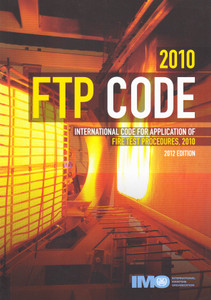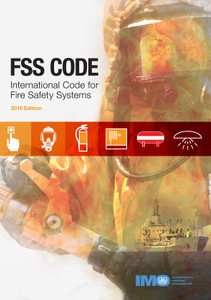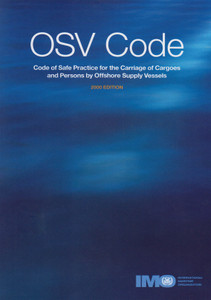
The Code on noise levels on board ships has been developed to provide international standards for protection against noise under the provisions of regulation II-1/3-12 of the SOLAS Convention.
The Code, adopted by resolution MSC.337(91), recognizes the need to establish mandatory noise level limits for machinery spaces, control rooms, workshops, accommodation and other spaces on board ships, and enters into force on 1 July 2014.
The
Code
includes:
a
format
for
noise
survey
reports;
guidance
on
the
inclusion
of
noise
issues
in
safety
management
systems;
suggested
methods
of
attenuating
noise;
and
a
simplified
procedure
for
determining
noise
exposure.
These
regulations,
recommendations
and
advice
are
intended
to
provide
Administrations
with
the
tools
to
promote
‘hearing
saving’
environments
on
board
ships.
Although
legally
treated
as
a
mandatory
instrument
under
the
SOLAS
Convention,
certain
provisions
of
the
Code
remain
recommendatory
or
informative.
The Code on noise levels on board ships (hereinafter referred to as “the Code”) has been developed to provide international standards for protection against noise regulated by regulation II-1/3-12 of the International Convention for the Safety of Life at Sea (SOLAS), 1974, as amended. Although the Code is legally treated as a mandatory instrument under the SOLAS Convention, certain provisions of the Code remain recommendatory or informative (see paragraph 1.1.3).
These regulations, recommendations and advice are intended to provide Administrations with the tools to promote “hearing saving” environments on board ships. This is, however, a dynamic topic, dealing with the human and technical environments in which they interface. Rules and recommendations will necessarily evolve, on a case-by-case basis, as a result of various technological as well as safety management practice developments. For this reason Administrations are encouraged to pass on experience and information received from recognized organizations, ship operators and equipment designers to improve this Code.
The Code has been developed having regard to conventional passenger and cargo ships. While certain types and sizes of ships have been excluded from its application, it should be recognized that full application to ships which differ appreciably from the conventional types of ships regarding design or operations might need specific consideration.
The Organization adopted a Recommendation on methods of measuring noise levels at listening posts (resolution A.343(IX)), which this Code is not intended to supersede. That Recommendation relates to interference by shipborne noise with the proper reception of external audible navigation signals and although the methods of measuring noise levels in accordance with the Recommendation and with the Code differ, these documents are to be considered compatible inasmuch as this Code is concerned primarily with the effect of noise on health and comfort. Care will be needed to ensure that there is compatibility between the general requirements and the requirements for audibility of navigation signals.
Resolution MSC.337(91)
Code on noise levels on board ships
Chapter 1 General
1.1 Scope
1.2 Purpose
1.3 Application
1.4 Definitions
Chapter 2 Measuring equipment
2.1 Equipment specifications
2.2 Use of equipment
Chapter 3 Measurement
3.1 General
3.2 Personnel requirements
3.3 Operating conditions at sea trials
3.4 Operating conditions in port
3.5 Environmental conditions
3.6 Measurement procedures
3.7 Determination of noise exposure
3.8 Calibration
3.9 Measurement uncertainties
3.10 Points of measurement
3.11 Measurements in machinery spaces
3.12 Measurements in navigation spaces
3.13 Measurements in accommodation spaces
3.14 Measurements in normally unoccupied spaces
Chapter 4 Maximum acceptable sound pressure levels
4.1 General
4.2 Noise level limits
4.3 Survey report
Chapter 5 Noise exposure limits
5.1 General
5.2 Conservation of hearing and use of hearing protectors
5.3 Limits of exposure of seafarers to high noise levels
5.4 24-hour equivalent continuous sound level limit
5.5 Hearing conservation programme
Chapter 6 Acoustic insulation between accommodation spaces
6.1 General
6.2 Sound insulation index
6.3 Erection of materials
Chapter 7 Hearing protection and warning information
7.1 General
7.2 Requirements for hearing protectors
7.3 Selection and use of hearing protectors
7.4 Warning notices
Appendix 1 Format for noise survey report
Appendix 2 Guidance on the inclusion of noise issues in safety management systems
Appendix 3 Suggested methods of attenuating noise
Appendix 4 Simplified procedure for determining noise exposure
A??s a specialized agency of the United Nations, IMO is the global standard-setting authority for the safety, security and environmental performance of international shipping. Its main role is to create a regulatory framework for the shipping industry that is fair and effective, universally adopted and universally implemented.
In other words, its role is to create a level playing field so that ship operators cannot address their financial issues by simply cutting corners and compromising on safety, security and environmental performance. This approach also encourages innovation and efficiency.
Shipping is a truly international industry, and it can only operate effectively if the regulations and standards are themselves agreed, adopted and implemented on an international basis. IMO is the forum at which this process takes place.
- Number of Pages:
- 62
- ISBN:
- 9789280115789
- Published Date:
- March 2014
- Book Height:
- 210 mm
- Book Width:
- 150 mm
- Author:
IMO
- Publication Date:
- February 2021
- Preview:
- Yes






